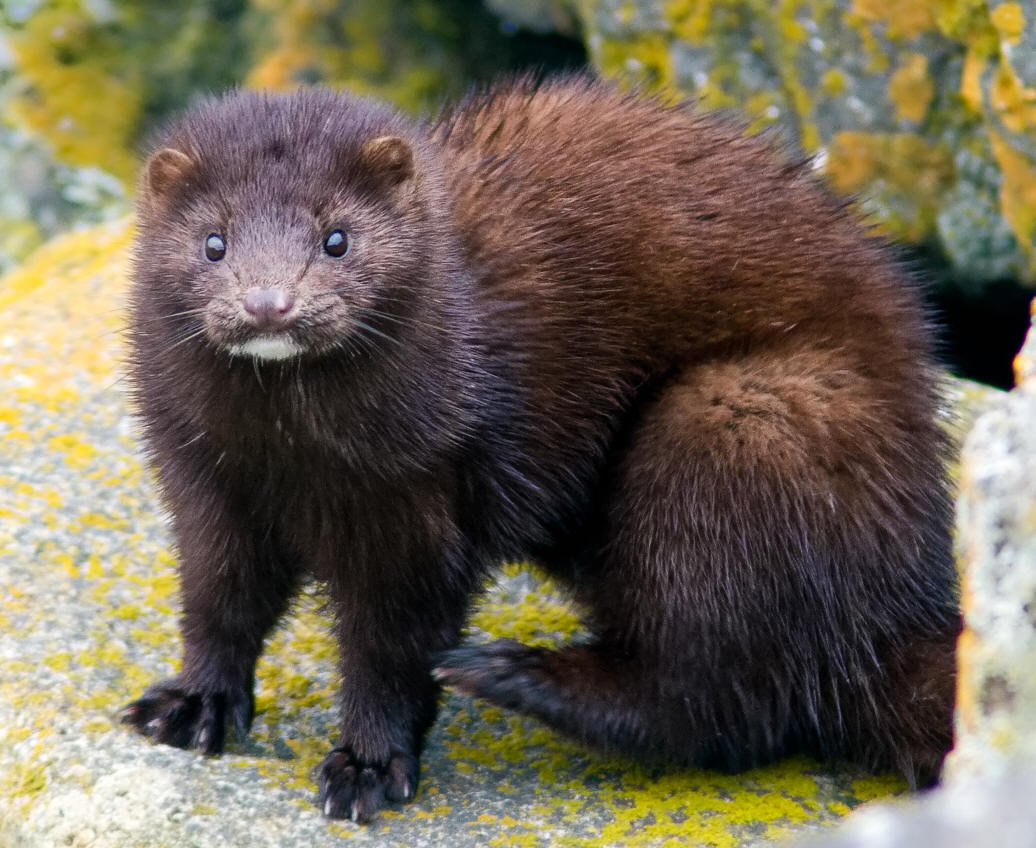Interactions
Competition:
Competition between Lontra provocax
and the American Mink at the southern tip of South America has been
of high interest for many studies (Medina 2013). These studies have
been performed to observe interactions at the southern tip of South
America. They focused on how well both species adapt to their
similarly ideal regions for mating and settling homes. Their diets
and habitats were studied in five different locations. The river
otters made their homes on more rocky and jagged areas while the
minks were settling down in smooth and level gravel areas along the
rivers. When their hunting times overlapped the minks daily hunting
and gathering times changed due to the otter’s greater aggression
for their hunting grounds. This made the minks become more diurnal,
day and night daily routines, which is unusual for this kind of
species. While this is interesting, the results are still being
tested.


Besides the American Mink, there are also
other species inhabiting the surrounding area. These species
include: Pseudalopex culpaeus lycoide, Fueguian culpeo fox,
Pseudalopex griseus,and the South American Grey Fox.
These species live in overlapping regions where they are fighting
for food and dens. Their overlapping territories cause problems for
all the species living in the area because the surrounding
vegetation and preservation of land becomes harder to sustain.
Another problem is that though the American grey fox and American
Mink are in healthy breeding condition, the Patagonian Otter and the
Culpeo Fox are both endangered species. With this knowledge in mind
wildlife preservationists struggle to keep balance between these
species and prevent the extinction of the Patagonian otter and the
Culpeo Fox.
Other interactions of the Southern River Otter include its predator-prey relationship with, but not limited to: crustaceans, mollusks, and several species of fish which are its main source of nutrients.
The endangered status of Lontra provocax is mainly due to interaction with humans. Humans poach the otters for their fur and cause damage to their natural habitat, making it unlivable. River otters have few predators but some include: alligators, bobcats, and birds of prey such as hawks and eagles.
* there are several species of eagle, two include the bald eagle and the golden eagle.
References:
Medina-Vogel, G., M. Barros, J. F. Organ, and L. Bonesi. 2013. Coexistence between the Southern River Otter and the alien nvasive North American Mink in marine habitats of southern Chile. Journal of Zoology 290: 27-34.
Gomez, Jonatan J., Ana C. Gozzi, David W. Macdonald, Emilce Gallo, Daniela Centrón, and Marcelo H. Cassini. 2013. Interactions of exotic and native carnivores in an ecotone, the coast of the Beagle Channel, Argentina. Polar Biology 33: 1371-378.
